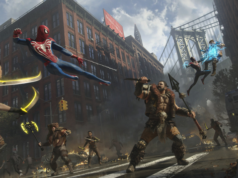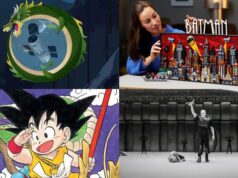
In the best possible way, The Last of Us Part II is hard. Not the overall challenge or its controls—gameplay is secondary to the emotional toll the story takes on you. It’s not a game that lets you choose what path to take: be the bad guy, be the good guy, etc. It forces you to be both and neither. To do things when you don’t want to, but also cathartically achieve moments you’ve been building toward. Depending on how you look at it, it can say a lot or nothing at all.
Save for how the game actually ends (which we won’t spoil here) the biggest “spoiler” in The Last of Us Part II is that Ellie isn’t the only major playable character. Ellie, the immune girl you play as in the first game, is the main character for the first half of the game, but once Ellie’s story reaches its climax, the whole thing resets. For the next half of the game, you play as Abby. Who’s Abby, you ask? Abby is the person who (OK this is a big spoiler, though it happens early) kills Ellie’s guardian and game one co-star, Joel.
For the first half of the game, Abby is almost the big boss. Everything Ellie does is so that she can find and kill Abby. So, as the player, you hate Abby—she pretty much murdered your dad. Along the way, Ellie kills basically everyone Abby loves until the two come face to face. The tension hits its apex and suddenly the game cuts to black.
G/O Media may get a commission
When the game comes back on, you’re now playing as Abby, a few days back in time. And this is where The Last of Us Part II really kicks into high gear. You, the player, know where the story is going because you just spent probably 12-13 hours of real-time attempting to find and kill Abby. But now we are Abby and it’s uncomfortable. You don’t want to be her. You want her to pay for what she did. You want to see the end of Ellie’s journey.
At first, you hope maybe this is just for a few minutes. Maybe you’ll go back to Ellie. Eventually, though, you realize you are stuck in this situation. Personally, there was a point where I considered stopping the game because I didn’t think it was going to be fun if I continued as Abby.
Then I realized that was exactly the point.
Now The Last of Us Part II has a real mountain to climb. Can the game not just convince you to play as Abby but, shock of shocks, maybe even side with her? As Abby’s story unfolds it becomes very obvious that for all the terrible things Ellie went through, Abby has potentially had it worse. Why did she kill Joel? Because Joel killed her dad, an event you are forced to live through numerous times. You spend all this time with Abby’s friends and side characters with the express knowledge that you, as Ellie, have already killed them. These are good people. Kind people. Young people. Slowly but surely you, the player, sway in the other direction. Ellie was wrong. Abby is the good guy. But then you see Ellie again and, well, that’s not easy either.
Eventually, as Abby, you’re forced to confront Ellie. Though the last 12 or so hours my have convinced you that Abby is right, those other emotions remain. There’s a confrontation, one you want to win—kind of have to win—but also, would be OK losing. As events move toward the conclusion, you jump between Ellie and Abby’s stories, leading toward the inevitable showdown and painful resolution.
While playing The Last of Us Part II, I had a feeling I was eventually going to have to make a choice: Abby or Ellie. I even kept saving my progress so that, once I made one choice, I could go back and make the other. But the game doesn’t do that. The creators have made their choice and you just have to live in it.
When the game prompts you to choke a character, you instinctively don’t press the buttons as rapidly as you would if you didn’t know both sides of the story. Or maybe you can’t bring yourself to press them at all. If you don’t though, you die and it resets. When you turn off the game, those struggles leave you thinking about those feelings. Did I feel OK doing that? Did I not? Which character had it worse? Does it matter? Are there good people in this world? Are we all just shades of bad?
These aren’t questions or emotions we’re used to dealing with in life, let alone a video game. Video games are meant to be an escape from reality, not a brutal window into it. But The Last of Us Part II somehow manages to be both; it’s a fun, violent action game that makes you feel complex, almost indescribable emotions. It’s not always comfortable, but ultimately it is rewarding.
As the credits rolled on The Last of Us Part II, there was much to think about. Where things could potentially go in this universe, of course, but also what the game was saying. Neither character is presented as “right.” Neither character is presented as “wrong.” Both had horrible things happen to them. Both get a good amount of payback for other things. And both, at least for a time, find some happiness.
Interestingly, after feeling one way, then feeling the other way, and having it all come to a head, I realized The Last of Us Part II left me slightly empty. I wasn’t happy or sad. I wasn’t wholly satisfied nor was I in any way disappointed. None of which is what you’re hoping for at the end of a 27-hour time commitment. And yet, sometimes life is like that. Endings aren’t always happy or sad. People aren’t always good or bad. Life, sometimes, is nothing but shades of grey, and if a video game can teach us that type of life lesson, it’s pretty damn impressive. I’d play it again in a heartbeat.
For more, make sure you’re following us on our Instagram @io9dotcom.
Source: gizmodo.com








